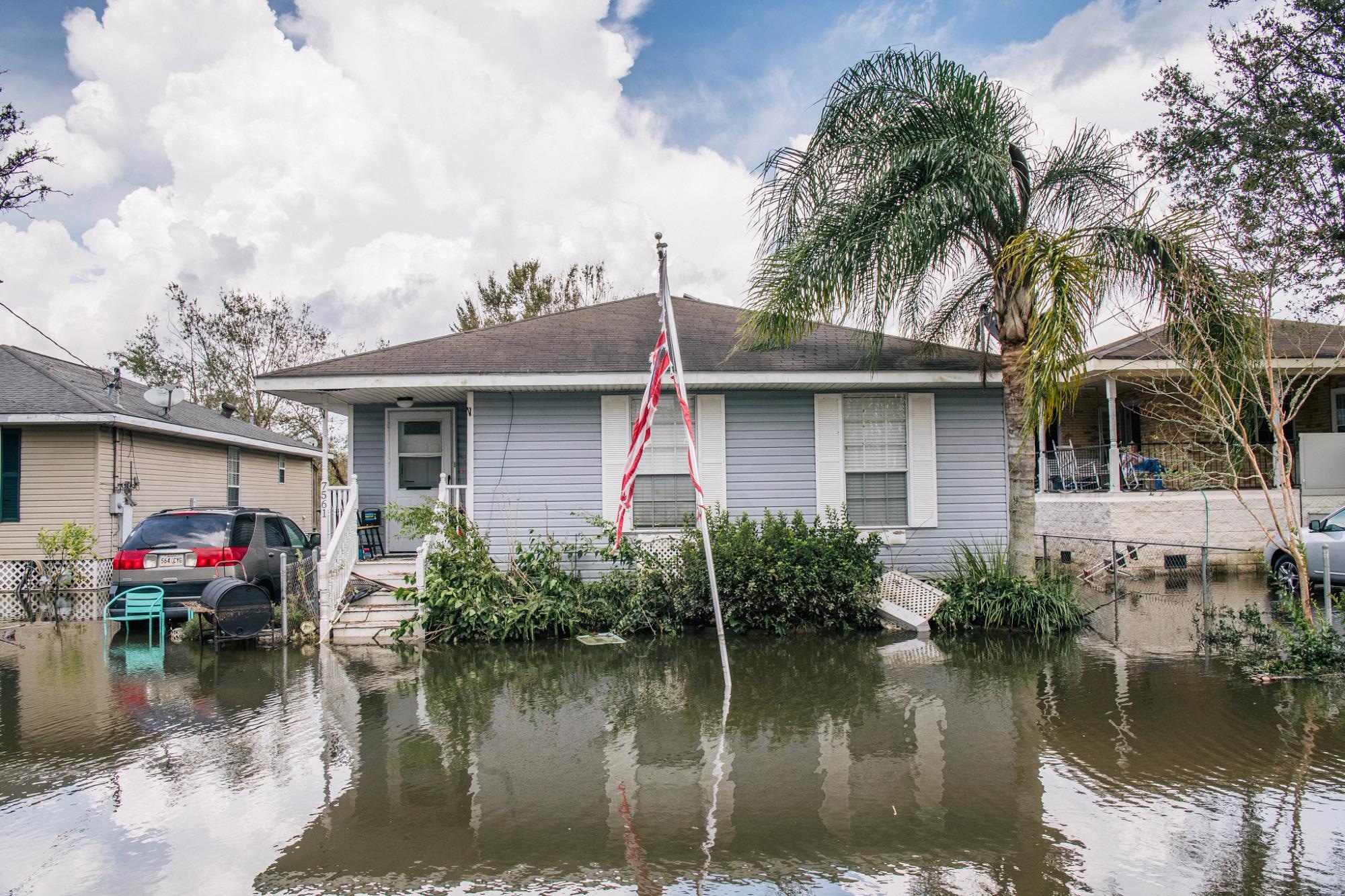A professor from Indiana University Bloomington has published a new paper on tropical cyclone precipitation extremes. The study offers data on inland flooding that could assist communities to be better prepared for the high amounts of rainfall caused by storms like Hurricane Ida in the United States.
 Inland flooding is a primary cause of damage and deaths from tropical storms such as the recent Hurricane Ida. Image Credit: Brandon Bell, Getty Images.
Inland flooding is a primary cause of damage and deaths from tropical storms such as the recent Hurricane Ida. Image Credit: Brandon Bell, Getty Images.
Justin T. Maxwell, an associate professor in the Department of Geography in the IU Bloomington College of Arts and Sciences, is the lead author of the study titled “Recent increases in tropical cyclone precipitation extremes of the U.S. East Coast.”
The study was reported in the journal Proceedings of the National Academy of Sciences of the United States of America on October 4th, 2021.
Landfall tropical cyclones are considered to be harmful and fatal not only as they produce storm surges and powerful winds but because they also result in inland flooding. For instance, Hurricane Ida struck states alongside the Gulf of Mexico in late August and went further up the northeastern coast of the United States. This resulted in billions of dollars in damages and more than 100 deaths.
In the study, Maxwell observed that scientific understanding of the impacts and possible trends of the consequent flood hazards is restricted by the comparatively brief tropical cyclone precipitation record as registered by weather stations, dating back to only 1948.
Thus, 319 years of tree-ring data from longleaf pine trees at seven sites in North Carolina and South Carolina were gathered by Maxwell and five other scientists. This helped offer a longer data record of seasonal tropical cyclone precipitation extremes.
Also, the research team included Scott M. Robeson, a geography professor at IU Bloomington, and Joshua C. Bregy, an IU Bloomington graduate student in the Department of Geography and Department of Earth and Atmospheric Sciences. Robeson and Bregy assisted with the analysis of the study.
The study showed a rise of 2 to 4 mm for every 10 years for the wettest tropical cyclones — an increase of 2.5 to 5 inches over the 319 years. This increase in rainfall is due to the slow-moving tropical cyclones.
The key takeaway is that this increase is only seen in the wettest storms. So take the recent Hurricanes Nicholas or Ida, for example, which produced maximum rainfall of about 14 inches and 11 inches. If these storms occurred in the early 1700s, they would have produced 2.5 to 5 inches less rainfall.
Justin T. Maxwell, Study Lead Author and Associate Professor, Department of Geography in Bloomington College of Arts and Sciences, Indiana University
“Having an additional 2.5 to 5 inches for today’s wettest storms make them much more hazardous, as that amount of rainfall by itself can cause localized flooding. Adding those totals on top of 9 to 10 inches of rain over a widespread area can lead to large flooding, especially in coastal cities that have a lot of impervious surfaces, so there is nowhere for the water to go,” added Maxwell.
According to Maxwell, gaining better insights into the rising precipitation extremes caused by tropical cyclones could be a major advantage for communities that should expect and plan for such kinds of storms.
For those that are in regions that are impacted by hurricanes, it is good to know that they are getting wetter and that trend will likely continue in the future, due to tropical cyclones moving slower and therefore producing more rainfall as they move through the U.S. This could help cities plan for the appropriate levees to handle flood waters, and it could help with evacuation orders.
Justin T. Maxwell, Study Lead Author and Associate Professor, Department of Geography in Bloomington College of Arts and Sciences, Indiana University
Journal Reference:
Maxwell, J. T., et al. (2021) Recent increases in tropical cyclone precipitation extremes over the US east coast. Proceedings of the National Academy of Sciences. doi.org/10.1073/pnas.2105636118.